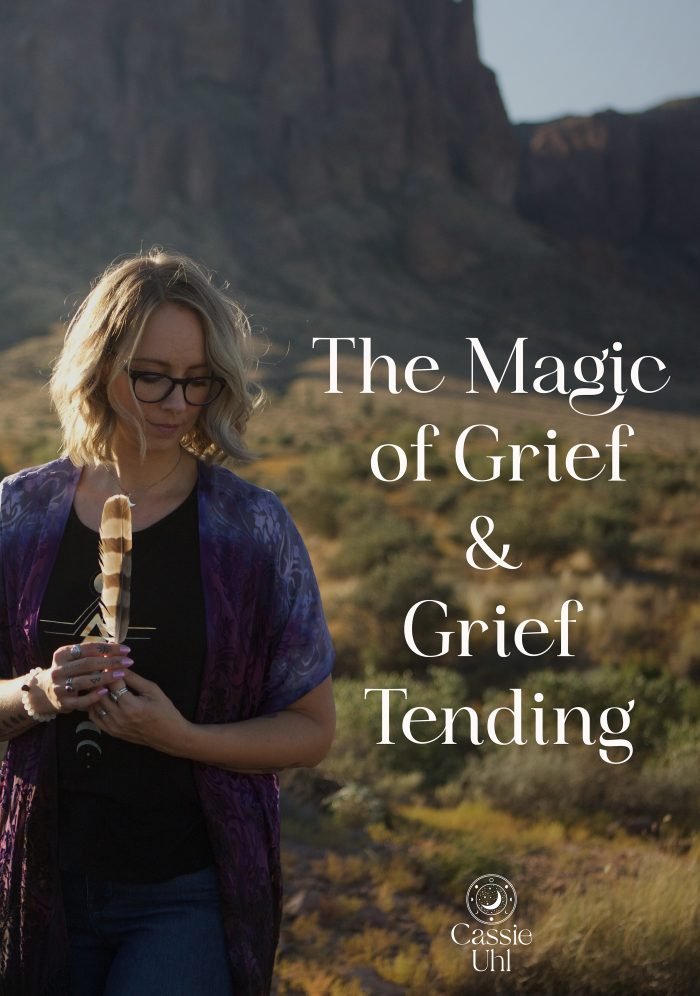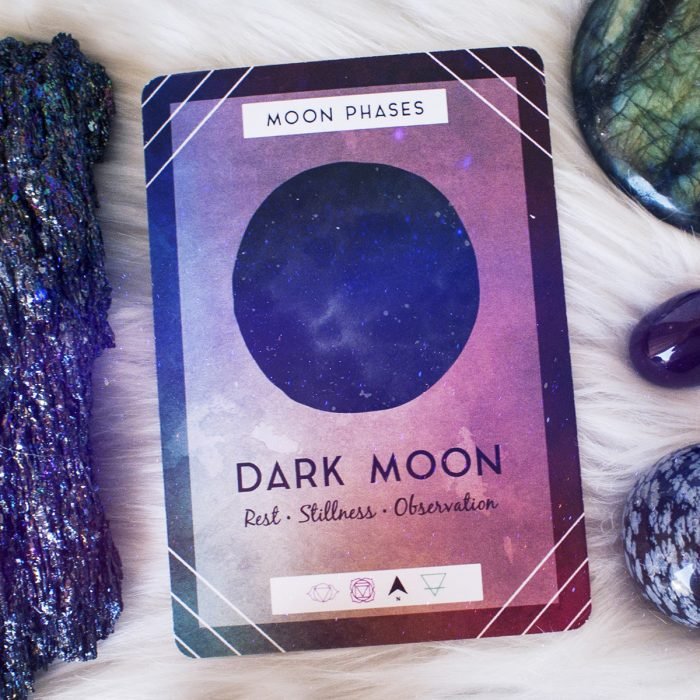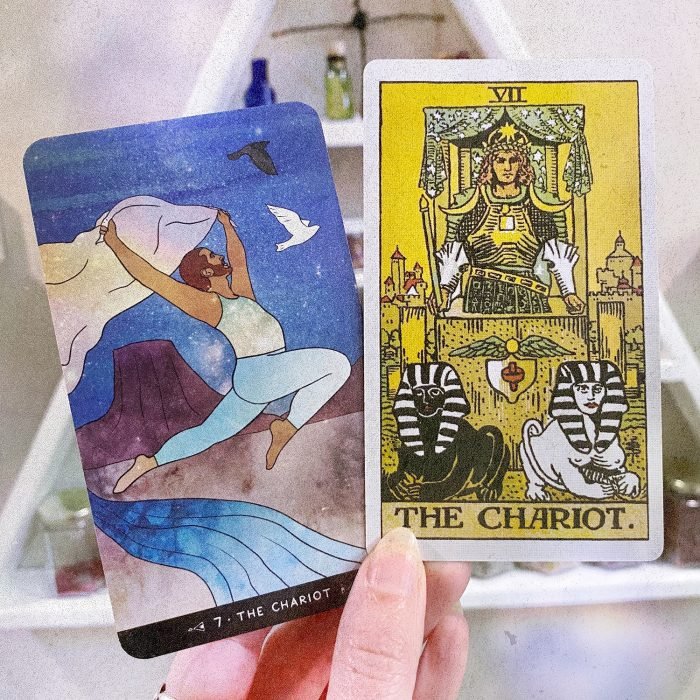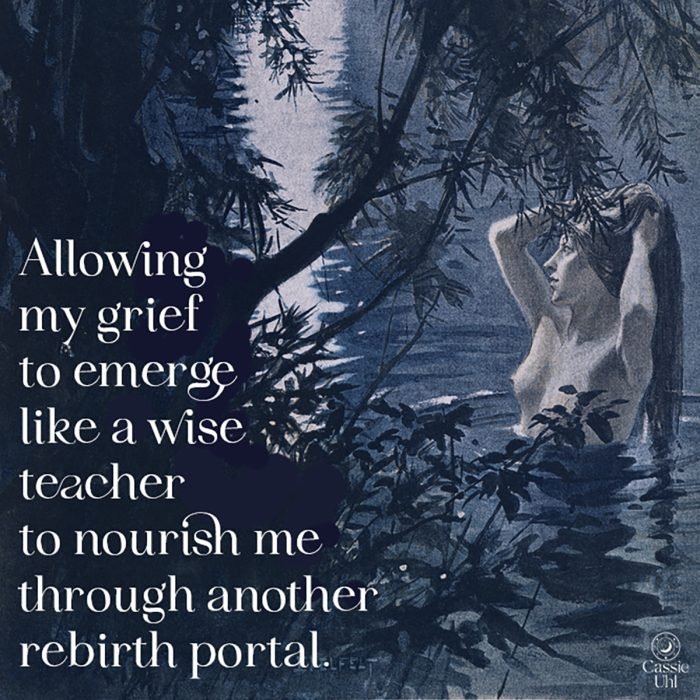The Magic of Grief & Grief Tending
Every rite of passage and rebirth you experience, whether on a spiritual, emotional, physical, personal, or collective level, includes opportunities to grieve. Yet, talk of grief is often reserved for death and dying alone. While in truth, grief relates to any deep sorrow, and sorrow accompanies many of the rites of passage we walk through. Some of the rites of passage, rebirths, and deaths that come to mind that so often lack our grief are the onset of menstruation, puberty, childbirth, monetary changes, loss of friendships, moving, changes in important relationships, career or work changes, deaths, and collective changes like climate change and the pandemic, just to name a few.
Listen to this post on my podcast, Rooting into Wholeness, here.
Grief lives within every death and rebirth cycle, waiting for us like a wise teacher ready to help us alchemize through another right-of-passage portal. Unfortunately, for many of us, rights of passage are sorely lacking in our personal lives and collectively, leaving our ability to properly grieve important changes neglected. How might our view of grief and grieving change if we could hold these words with more reverence? How would life's rights of passage, death, and rebirth processes look and feel if you had more time and space to grieve them properly? How might we as a collective find more peace if we made more space for the magic of grief?
In the book Death Nesting by Anne-Marie Keppel, she shares this about grief, "Rather than seeing it as something to "get through” and "move on" from, learn how these new feelings incorporate into your life. Death changes life–that's what it does. Be gentle with yourself and others as you learn this new being you are becoming." When I grieve, I'm often reminded that I need far more time and space than I think to be with my grief. What would happen if you allowed more time to tend to your grief or, as Anne-Marie put it, “to learn this new being you are becoming”? Would you turn into a pile of tears, incapable of moving forward? Maybe for a little while, but not forever. I suspect your grief, like mine, has wisdom, healing, and even inspiration to offer you as you navigate this physical world. Perhaps focusing on our grief is the transformative and paradoxical magic we need to emerge from personal and collective rites of passage more healed and whole.
This isn't to say grief tending is easy, and of course, there are barriers to regular grief tending embedded in the systems in which we live, so each person's ability to grieve will vary. The natural cycles of nature and the moon show us ways to grieve even when it may be difficult. I've found in my own grief tending that my ability to grieve directly correlates to my capacity to love myself and others and experience deep joy. Like most things, the more time you spend cozying up to grief, the more natural it will feel over time.
Like so many areas of life, perhaps the best place to better learn how to grieve is by turning to our closest teachers in the natural cycles surrounding us, like the moon and the seasons. In this share, I'll explore grief through the seasons, moon phases, and the tarot, gleaning ways to honor and learn from our grief to help us become whole and more firmly rooted in our humanness. I'll offer energetic insights into how I see grief show up in the energy body as an energy worker, how I approach it on an energetic level, and other grief rituals. This share is an invitation to examine your grief, and the magic, healing, and joy found within the grieving process.
As a human who grieves, a death doula, and an energy worker, I'm no stranger to grief, but I'm also not the authority on grief. As a cis white woman, I carry internal biases that skew my perspective, which undoubtedly pertain to my experiences around grief. As always, take what you like and leave the rest. Furthermore, if you've recently lost someone or are experiencing deep grief, I invite you to be gentle with yourself as you listen and take breaks if you need. Therapy can be a wonderful ally to grieving. You don't need to do this alone.
Grief and the season of slowness, winter
Wintertime is our dark moon of the year and a palpable reminder of the need for slowness, darkness, death, and the need to retreat inward. The hibernating flora and fauna remind us not to extend our energy outward year-round. Inward and descending energy has a vital and nourishing role in our existence. My son wisely described this season as the time that "the sun takes a rest." As I write this, here in the Northern Hemisphere, we are a week away from the Spring Equinox, positioned on the cusp of the season of rebirth. For me, the grief is palpable.
As my first year back in a cloudy, cold climate for winter, it dawned on me that the seasonal depression I felt creeping in was another metaphorical red flashing sign inviting me to "slow down!". Leaving me wondering, would the effects of SAD be as bad if I could rest and retreat inward even more throughout the winter months? The amount of sunlight we have access to throughout winter may be fixed, but the reality is that slowing down, regardless of the season, is simply not an option for most. Depression is real, and lack of sunlight can certainly play a role, but would SAD be as severe if people could slow down and grieve more amidst these natural seasons of less light?
A view from one of my many midwestern winter season walks.
When I lost my grandmother and father within a couple of months of each other, I entered what I like to call a "grief portal." Time seemed to slow down, everything felt hard, and through my patriarchalized and capitalized lens, I just wanted to return to "normal." The biggest lesson I took away from that experience was how much slowness my grief required. I needed loads of time to do nothing to allow things to process. Of course, the way each person processes their grief will be unique, but for me, getting to a place where my grief can come out to be processed requires tremendous slowness.
Of course, rest and slowness may sound lovely, but there are very real barriers to this kind of big rest, grief tending, and inner transformations. I was privileged to have the space to slow down amidst my grief amidst deep loss. Having time for big slowdowns to process grief may not always be doable. Add to these barriers the fact that many of us have endured various levels of conditioning to place more value on our ability to produce over our ability to simply be. Slowing down can feel like a life-and-death situation. Yet, for many of us, this is what grief needs.
It is within this season of slowing down and integrating that our grief wants to be witnessed and held close the most. The world outside is in a literal death phase, reminding us daily to honor our personal need to grieve. Yet, our attempts to make space for grief can, understandably, feel too difficult to make space for or thwarted due to the demands of living in a capitalist society, stretching us ever thinner in a time when we should have the space to be with our grief and let parts of ourselves die away.
Returning to the midwest and communing with the winter landscape has left me pondering how to rewrite this season to make more space for my need to grieve, integrate, and transform. I'm learning that being with my grief at this time is the most potent spell and healing gift I can offer myself this season. When the inevitable happens, and my grief bubbles up, or someone else's grief begins to overflow in my presence, I try witnessing it without judging it or trying to fix it and instead, asking myself how to lovingly hold the space for it, allowing it to be witnessed just like the death of nature all around me. What a powerful gift for myself and others when I can approach grief from this tender and vulnerable space.
When I look at grieving as something I need to thrive and become whole, it feels less like something I need to get over and more like something I need to hold dear. When I move further into being present with my grief, its magic shines even more. My ability to be present with more grief and the grief of others expands, and my grief transforms into the gift of being present for someone else in their grief. I found myself sitting with the starkness of the winter landscape, witnessing the grief of nature on full display, and wondered if, rather than tucking grief neatly away for an "appropriate" time, perhaps we could be like the winter landscape and allow our grief to simply be.
Of course, wintertime is not our only season of grief, death, and rebirth. Mother moon shows us how to die, grieve, and be reborn every lunar cycle. Let's explore the wisdom of the dark moon phase in relation to grief.
Honoring the dark moon
The dark moon phase is mother moon's death, rest, and integration season. Unlike the full moon's magic, the dark moon is not a time for manifesting and materializing but for returning to the inner cauldron, shadow work, and connecting with unseen realms. It is a monthly opportunity to honor death and grief.
Dark Moon card featured from The Ritual Deck (discontinued)
In Sarah Faith Gottesdeiner's book The Moon Book, she describes the dark moon as "a site of liberation," and I couldn't agree more. It is within the darkness of this phase that we are granted the space to excavate from our depths the parts of us that need to be witnessed and loved the most. By loving these parts of ourselves and witnessing our grief, they can be fully integrated into our inner soil, cultivating a necessary richness for new seeds to be sown.
When I neglect this phase of the moon's cycles, my inner earth remains parched, thirsty for my grief to be witnessed and tended. Liberation comes when I can hold my sorrow close, rock it, and tell it it's okay to be. Giving my grief permission to integrate into my inner landscape gives rise to the fertile soil needed for new life. I get free.
The beauty of honoring grief through the dark moon phase is that it comes every month. You don't have to grieve everything at once. The moon reminds us daily that we're not fixed beings and that change is our true nature. We are not meant to be radiant and positive every day; we are also not meant to grieve every day. Every lunation is an invitation to honor where you're at and how you feel, not how society tells you to feel. The dark moon is often the reminder I need to honor my grief and the little day-to-day deaths we all experience. Sometimes, we're intended to crumble and be held by the earth, and the dark moon phase can be a monthly ally to assist in this kind of grief tending.
Grief as paradox and the chariot
Beyond my personal grief tending this season, I’ve noticed the topic of grief surfacing more on a collective level as well. Have you noticed this, too? Being in a chariot year (2+0+2+3=7, which corresponds to the chariot), I found myself called to think about grief in relation to this card and was excited to see so many overlapping themes and invitations around grief and grieving. Even though the chariot is not usually correlated with grief, I think it has some wisdom for us in this collective season.
The first clue to the chariot card being an invitation to help us grieve is its placement, and I’ll be honest, the placement of this card did not dawn on me immediately. It wasn’t until I was in the final editing process of this share that I received a little nudge reminding me that the chariot card is the last card of the first line in the major arcana. Wow. Talk about an opportunity to invite grief in. The placement alone sets this card apart as a point of death and rebirth. The fact that the chariot card is the card associated with 2023 indicates that this is indeed a year to, among other things, honor our grief individually and collectively.
Left: The Chariot Card from Journey Tarot by Cassie Uhl, Right: The Chariot Card from the Waite/Coleman deck
This isn’t the only invitation to grieve that I’ve found in the chariot. The chariot card is one of those cards in the major arcana that I find has many layers, paradoxes, and can mean different things at different times of life. Let’s dive into the paradox of this card and how it shines a light on the paradox in grief.
The name of the chariot indicates movement and action, yet, on the Waite/Coleman deck, there is no movement shown. It is often touted as a card of willpower yet corresponds with the soft and intuitive energy of Cancer in the zodiac. The paradox continues with the duality of symbology, which can be seen in the black-and-white sphinx looking in different directions. I captured this in my deck with the black and white birds heading in different directions. The medicine of this card is potent and not one that I will be able to fully expand upon here, but I think it has some powerful invitations for us as we examine our grief on a collective level.
There’s a certain amount of resiliency building that accompanies regular grief tending. This is where the chariot comes in. Within the chariot's many layers, there are elements of softness, which we can see with the Cancerian energy tied to this card. There is an invitation to allow what is, to sink into it, and to try to be in a state of flow with what is, even when it’s uncomfortable.
I see the willpower part of this card come in with how we engage with emotions and grief. The chariot asks us to allow a steady stream of emotions to flow, all while staying on course or perhaps being open to flowing in a new direction. With the gates of grief open, your emotions may indeed put you on a new course entirely or direct your life in new ways. The chariot can be an invitation to get more comfortable in the ups and downs of grief tending. It shares possible avenues to explore around building resiliency while pendulating between grief and joy. Asking, “how can we be with the joy and the grief without being knocked off course so far that we can’t come back?” or, “how can we allow the pendulation between grief and joy to carve a new pathway?”
There’s a certain tension held within the chariot card—a tension between the world of our subconscious emotions and the logical world. In Rachel Pollack’s book Seventy-Eight Degrees of Wisdom, she expresses the tension found in the chariot through our relationship with speech and language in this excerpt. “However, just as the ego is limited, so is speech. First of all, speech restricts our experience of reality. By forming a description of the world, by giving everything a label, we erect a barrier between ourselves and the experience. When we look at a tree, we do not feel the impact of a living organism; rather we think ‘tree’ and move on. The label has replaced the thing itself. Also, by relying too much on this rational quality of language we ignore experiences that cannot be expressed in words.”
In what ways do we limit our ability to feel our grief fully and all of the magic it has to offer? Cancer, the astrological sign connected to this card, epitomizes feeling and being in our emotions. When paired with the strength and willpower of this card, how are we being asked to use those emotions to direct our movement forward? There is an over-arching theme of being in flow with the discomfort of not knowing where our emotions will take us, which may be another reason some fear sinking deeply into grief. I know I’ve certainly held this fear. What would it look like if the tension between your emotional and logical worlds were in harmony? How might inviting more grief into your daily life inform your daily actions or larger goals?
This plays out in so many ways societally as well. I find myself constantly faced with the paradox of seeing and experiencing deep pain and injustices in the world, yet, I’m asked to forge ahead like everything is okay, or worse, that it’s completely normal to shove these grievances under the rug and carry on. I think intuitively, even humanely, many of us see how problematic this is. This is certainly one side of the chariot, the idea of forcing and forging ahead at all costs by leaning deeply into our willpower. But, if I invite in more of the nuance this card offers, I can see the need to bring my emotional and subconscious world into my decision-making and how I use my energy. Through this lens, I can see the chariot as an invitation to lean into my willpower to find ways to dance between and betwixt my emotions and the logical world.
How might our trajectory as a collective change if more of us were forging new paths by flowing between our emotional/subconscious and logical/physical worlds? I sense this shift coming as many of us tire of binary thinking, especially in political spaces. These shifts could be slow and painful, but I don’t think they have to be. There’s so much space for deep joy and pleasure in these in-between spaces around our grief, joy, and the real demands of day-to-day life. I hope 2023 will be a year of flowing more intentionally between our grief, emotions, and the logical steps needed to build a more just and equitable world.
Grief and the heart space
I don't often share experiences from my energy healing practice, but this specific topic felt like the right time to do so. Tending to grief within the heart space is one of the most common themes in my healing work with clients. Grief often presents to me as heavy weights or boulders in the energy body settled around the heart space. Sometimes these energetic weights are buried deep under several layers. Sometimes it takes multiple sessions for these pockets of grief to be revealed to me as a person becomes more comfortable working with me and my guides.
How I approach untended grief in the energy body is quite different from how I approach a general imbalance in energy. I'm not the type of energy worker that removes everything from the person I'm working with. So, I certainly don't go in clearing away layers of grief when I come across it. I've found that clearing everything away is not only non-productive and ineffective but can potentially have negative side effects. Over the years, spirit and my guides have become exceedingly clear that grief needs to be witnessed, held, and danced with by the person I'm working with to be fully integrated and processed. There are things I can do to help bring awareness and help the grief surface or to give tools to tend to the grief, but it is not a healing path I can walk for someone else.
This isn't the answer most folks want to hear. Of course, it would be much easier to remove people's grief, never to be seen again. However, as I shared, I feel there's deep wisdom in our grief and what a tragedy it would be to be severed from our humanness in this way. This isn't to say I won't remove energy from a person's field that isn't serving them, but my guides are always very clear about what needs to go and what needs to stay when I work with others.
Unsurprisingly, most of the grief I see as an energy worker is settled in the heart space. Like the chariot card, the heart space is an extremely nuanced, layered, and paradoxical part of the energy body. The bridge area holds a unique duality between the physical and spirit realms, where these two qualities seek a sense of harmony. When I see untended grief in the energy body, it often affects one's overall ability to give and receive love, which has been my experience with grief, too. Love, on all fronts, is undeniably a bedrock of our human experience. Again, pointing to grief's important role in our ability to love, be loved, and experience deep joy.
When I encounter untended grief in the heart space while working with someone, I usually sense a deep desire to witness, feel, and hold the grief. What I offer this kind of grief when I come across it is that deep witnessing. I give it space to tell me what it's been holding onto for so long. I hold it and rock it. After sessions like this, clients often report a sense of openness in the heart space. I do this to help bring it to the surface, not to clear it away. Instead, it's an invitation to embark on a personal grieving and healing journey if the client wants to, with or without me.
The rituals I offer after this kind of work are similar to what I do when I'm energetically engaged in someone's heart space. I invite folks to sit with their heart space, see what arises, and give it space to be witnessed and held. What our grief wants of us is rarely difficult, but the structures in which we live can make it feel like they are. If you're feeling pulled to tend to your grief in this way, you can find a by-donation grief-tending guided meditation I created here. I'll explore this meditation in greater detail below as well, as well as some other grief-tending tools.
Touching into the magic of grief through ritual
The ways we approach our grief will be as varied as the ways we approach life. Let these offerings serve as a place to play and create your own rituals around grief. As I shared earlier, what I offer here is based on my experience as a human who grieves, an energy worker, and an end-of-life doula. I am not an expert or a therapist. If my experiences of grief and grieving do not relate to you or your experiences, that is okay. As always, take what you like and leave the rest.
It's also important to note that working with a trained therapist can be incredibly helpful for grief work. I am a huge proponent of therapy, and many of my deepest underworld journeys have included the aid of a therapist or spiritual counselor. You do not need to go this alone.
Grief work can look like a lot of things. It can look like inner child healing, shadow work, or grieving the loss of someone or something. Remember, grief is paradoxical, so it might take you on surprising journeys and not look how you thought it would. For example, when I was seeing a therapist to help me navigate the grief of losing my father and grandmother, much of the work that transpired between us revolved around healing grief within my childhood. I invite you to be open-minded and curious as you explore your grief.
Grief Witnessing Meditation
In my practice, some of my most powerful grief work is quite passive. I have learned a lot about slowness through my grief tending and working with those at the end of life. Grief works on its own time, which can be challenging in and of itself. Especially those of us who like to have a checklist! I've shared this before and will continue to. During one of my grief journeys, my therapist reminded me often that in grief, "doing nothing is doing something." It took me a long time to hear her, but I finally did, and it's something I remind myself of regularly today. Grief requires us to slow way down, and there's no shortage of barriers trying to prevent many of us from doing that.
Vintage illustration of a Young woman bathing by moonlight, Victorian art print, 19th Century
This meditation practice is the most common practice I share with my clients who are carrying grief. It is very passive and may even seem overly simple, try not to let the simplicity of this grief-tending exercise keep you from trying it.
Find a guided audio version of this meditation here.
Grief tending heart space meditation
Carve out 10-40 minutes, whatever you feel you have the capacity for, as I'll encourage you to return to it often.
Settle into the present moment by noticing your breath and body. Add in any practices that help you root into the moment.
When you feel ready, settle yourself energetically in the heart space. This might look like visualizing traveling into the body and the heart space, visualizing a green or pink field of light around the heart space and focusing your energy there, or something else. There's no wrong or right way to do this. Your goal is to focus your attention on your heart space.
As you settle into this space, simply notice what comes up, any physical sensations, emotions, visuals, or where you feel called to move within the heart space.
If you feel stuck at any time, you can consider asking your heart space questions like, "Are there any parts of myself that need tending to?", "Are there any versions of myself that need to be witnessed?" or "Are there any griefs that need to be held or honored?" I usually find an area of focus that my heart leads me to.
Go where you're led as far as you feel safe to continue. You could come in contact with any number of feelings or past experiences that feel they need your attention. Remember, you do not need to feel them all simultaneously. Spend as much time with each layer in your heart as you want, knowing you can always return.
You may find it helpful to ask your grief or any younger versions of yourself that you come in contact with if there's anything it would like for you to do to better tend to it. You may find that your grief simply wants you to play or laugh more to honor parts of your childhood that were taken away.
Come out of this when you're ready, and take your time returning to your physical space. Consider reintegrating by eating some food or having some tea to root into the physical body.
If you'd like some support with a meditation like this, find my guided meditation for grief here.
Play, expression, and ritual
Play, ritual, and various forms of expression have held and continue to hold key roles in grieving that is often forgotten in modern times. In Ireland, there's been a resurgence around the art of keening, which is the intentional wailing, singing, and crying for the dead—a practice initiated by Goddess Brigid after the death of her beloved son. In Ireland, a woman is sometimes hired to keen or wale at a ceremony. The keener holds multiple roles, one to give permission for others to wale or yell, but also to help usher the dead to their next phase. Did you know there are also past practices of game-playing and storytelling amidst the grieving process in Ireland? They were called "wake games." Similar to keening, they were suppressed as Christianity dominated.
In Monica Sjöö's important book, The Great Cosmic Mother, she speaks of the importance of group ritual and expression in rites of passage, "Rites of transition from one life stage to another required group participation in ritualized expression, all designed to keep the individual's psyche united and in balance while passing through crises." I see this passage as another reminder of how many have forgotten the importance of grieving together. Of course, this "forgetting," was quite intentional. Grieving takes time, and many systems we abide by now, like capitalism, white supremacy, and patriarchy, do not allow the time it takes to grieve properly. This isn't true for everyone, and there are certainly many cultures that have maintained beautiful and powerful grief practices, and, as I mentioned, some are seeing a resurgence like keening. However, for the most part, what I see, as someone who works with folks at the end of life is that many of us have a beautiful opportunity to learn how to grieve better, especially together.
Preparing and conducting rituals around grief throughout the dying process was a big part of my end-of-life doula training. There was also huge importance placed on guiding folks to create rituals independently or as a family. As someone who lives and breathes ritual in my personal practice, I understand the personal nature of ritual. The way you need to grieve, or your family needs to grieve, isn't something I can tell you. I can encourage you to explore your ancestry, if it's accessible to you, and learn about ways your ancestors grieved together. I can also offer you some questions to ponder or journal on when thinking about ways to express or ritualize your grief.
What story does your grief have to tell, and how might that story want to be told?
What parts of your life have died or will die amidst this grief? How might you honor those parts and their ending?
How will your grief and loss create openings in your life, whether painful, sad, or happy? Can you think of any ways this openness may want to be honored or acknowledged while simultaneously holding space for your loss?
While sitting in your grief, what does it feel like your body wants to do or not do? How might you honor this?
While tuning into your grief, can you ask how it would like to be expressed? What does it have to tell you?
Beyond these reflections, I will offer you one tool that has served me well throughout my life and my grief, and that's through working with altars.
Grief altars
Different cultures have used altars since the beginning, and grief and loss are powerful ways to work with them. When I was fresh in my grief after the death of my father and grandmother, it caused me deep pain to see pictures of them. Each image served as a reminder of their absence. One of my earliest grief-tending methods was through creating a grief altar. This altar had no images. Instead, I used stones, flowers, and other found objects to represent them. My altar for them held space for all the indescribable feelings I was experiencing around their deaths. It gave me a physical space to put all my big feelings when I needed a break from carrying them. Over the years, I eventually added images of my loved ones to this altar. It is still up in my house today and continues to transform in appearance and purpose. What started as a container for my grief that I could dip in and out of has morphed into a physical representation of my reverence and connection to these loved ones.
I created a similar altar for my grief around my difficulty having children. There is no grief too small for an altar. Every grief you carry deserves your love. Altars can be small and simple or large and intricate. There is, in my opinion, no wrong or right way to create an altar as they are extremely personal. One purpose of an altar is to bring physicality to something you're working with or an experience. In grief, an altar can be a place to hold, honor, or work with your grief. If this feels like something you'd benefit from, I invite you to approach your grief altar with curiosity and a playful spirit. You might even find it helpful to try the grief-honoring meditation earlier and ask for insight into what creating a grief altar might look like for you.
Grief offers us a bridge between our deaths and our inevitable rebirths. Whether we honor the grief within them or not, the death and birth cycles will always continue within our own lives and the collective. The invitation of grief is to be a present participant within the many processes of death and rebirth we will all experience. When I become an active participant in my losses, when I decide to feel them fully and dance in the grief, I am simultaneously allowed the presence to rebuild myself or my life in meaningful ways. We can extend these sentiments to the collective as well. When I seek moments to be present in the grief of the mass extinctions happening all around us, to feel it and dance alongside it, I also create avenues to become an active participant in our rebirthing process as a collective. That is the magic that grief offers us. May you be with the grief fully, dance with it, let it wale through your body and out your mouth, and let it stream down your face and stomp through your feet into the great mother earth who holds us all until it is fully witnessed and held.







